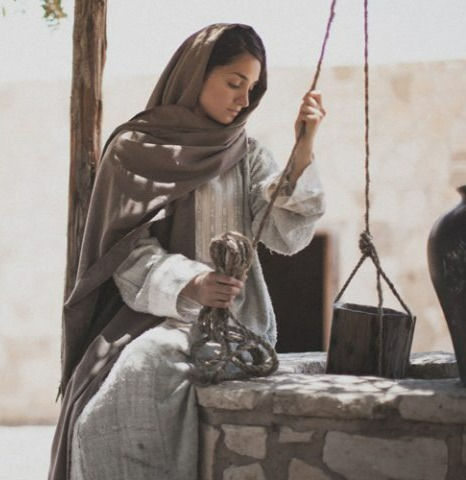THE SAMARITAN FEMINIST
- Charles
- 11 mars 2023
- 5 min de lecture
Reflections for the Third Sunday of Lent (Exodus 17:3-7, Romans 5:1-2, 5-8, John 4:5-42)
Last Wednesday (08 March) was international women's day. Inspiring quotes, beautiful prayers, and touching greetings flooded both social and traditional media. We posted on Whatsapp, Instagram, and Facebook voicing our support for gender equality, inclusivity, and better appreciation of women in our families, Churches, and societies. And the gospel today presents the voice of a humble Samaritan woman who has been struggling for the right to be heard! The Samaritan woman has been trying to penetrate the silence of history for over 2000 years. This Third Sunday of lent, let us lend our ears to the Samaritan woman. She has some interesting lessons for our lenten conversion.

The encounter of Jesus with a Samaritan woman at Jacob’s well is one of the theologically and spiritually enriching gospel episodes. Unfortunately, however, this richness is lost in our exclusive obsession with her ‘moral’ failings (her five past failed marriages and her current non-marital relationship). Isn’t this symptomatic of our general tendency to reduce the identity of women to their marital status and their dignity to the sexual ‘purity/impurity’ of their bodies? This Sunday, guided by Lyn Kidson (The Impact of Jesus of Nazareth, 2020) and Sandra M. Schneiders (The Revelatory Text, 1999), we dare to look beyond the Samaritan woman’s label of ‘adulteress’. If the Samaritan woman were a feminist, how would she challenge our objectification of her story? How would she want us to call her?
She is a bride:
The encounter follows a typical biblical pattern (which exegetes call a ‘type story’) of the meeting of future spouses near a well. Abraham’s servant Eliezer finds Rebecca, the future spouse of Isaac at the well of Nahor (Geneses 24); Jacob meets Rachel at the well near Harran (Genesis 29), Moses meets Zipporah at the well of Midian (Exodus 2). And now Jesus, whom John the Baptist identifies as the bridegroom (John 3:29) comes to Sychar, a town of Samaria to the site of Jacob’s well in search of his future bride. It is here that Jesus meets the Samaritan woman, who just like Rebecca, Rachael, and Zipporah had come to draw water from the well. The Samarian woman is an unlikely bride with a painful past and an uncertain future.

The fact that she was a samaritan makes this encounter even more remarkable. Who were these Samaritans? When the northern Kingdom of Israel fell to the Assyrians in 721 B.C., many were exiled to Assyria as captives, but some remained in the land and intermarried with foreigners planted there by the Assyrians. These half-Jewish, half-Gentile people came to be known as Samaritans. Regarded as spiritually corrupt and half-breeds, the Samaritans were in fact hated more than the gentiles. Jesus’ entry into Samaria, therefore, is Yahweh’s reclamation of his estranged spouse. The bridegroom is here to integrate Samaritans into his new Israel. The Samaritan woman was the starting point of this integration project. In her encounter with the bridegroom, she welcomes Jesus’ vision of a new Israel.
She is a seeker:
This encounter is nothing less than a scandal. We understand her shock when she asks, “How can you, a Jew, ask me, a Samaritan woman, for a drink?”. When the disciples returned, the gospel notes, they were amazed that he was talking with a woman. Both Jesus and the Samaritan woman were aware of this fact. The Samaritan woman’s search for answers and Jesus’ search for her overcome the walls of sexism, nationalism, and racism that were meant to keep them apart. Our discipleship is a fruit of a mutual search: our thirst for meaning that transcends us, and God’s passionate search for each of us. In the first reading, we see an example of a failed search. The chosen people grumble! The Samaritan woman epitomises a perfect and perseverant seeker.

To understand the sincerity of her search, it is enough to compare our gospel passage with that of Nicodemus (John 3:1-21). Nicodemus was a pharisee, ‘Israel’s teacher’, an elected member of the Jewish ruling council, and more importantly, a man. He comes to Jesus at night, in the cover of darkness, and returns confused. The Samaritan woman, on the other hand, was an outsider, the excluded ‘other’, so often ostracised and despised. She dares to converse with Jesus in broad daylight. She seeks answers to crucial theological questions pertaining to worship and the messianic times. It is to the Samaritan woman that Jesus declares the first of the ‘I am’ statements which are crucial to John: “I am he, the one speaking with you” (evocative of Exodus 3:14).
She is a missionary:
John adds an important detail in today’s gospel: “The woman left her water jar and went into the town”. Just as the first disciples left their nets, boats, fathers, and tax booths to respond to the call of Jesus, the Samaritan woman leaves her jug for she has now found the living water. The purpose of her visit to the well is redefined. She now becomes a witness as she returns to share the good news about Christ whom she had discovered. "Come see a man who told me everything I have done. Could he possibly be the Christ?", she tells the people of her town. One cannot miss here the echo of the constant Johannine invitation to come and see. The same invitation was extended by Jesus to the disciples of John the Baptist (1:49) and by Philip to Nathanael (1:46).

American author and co-founder of the Seventh-day Adventist Church Ellen G. White, reflecting on this passage in her book The Desire of Ages writes, “Every true disciple is born into the kingdom of God as a missionary. The gospel is for “everyone who believes,” and whoever receives the gospel, the good news—Jesus Christ—naturally becomes a missionary. (p. 195).In the public life of Jesus, the Samarian woman becomes the first person whose witness brings a community “come, see, and believe” in the messiah. “Many of the Samaritans of that town began to believe in him because of the word of the woman who testified”, insists John. She introduces her fellow Samaritans to their own personal faith journeys. In the end, they recognise Jesus as the “true saviour of the world”, the post-paschal proclamation of the kerygma of faith. In all respects, the Samaritan woman becomes the perfect model of an effective missionary.
This lent, the Samaritan woman calls us to conversion in the way we perceive, portray, and relate to women. She challenges us to shed the labels that we uncritically attach to the women of our families, our churches, and our society. Her story is a challenge to our patriarchal assumptions and norms. May the example of this fascinating biblical feminist enable us to enter into deeper communion with Jesus, our bridegroom; continue our search for meaning with patience, and become true missionaries of Christ.




Commentaires